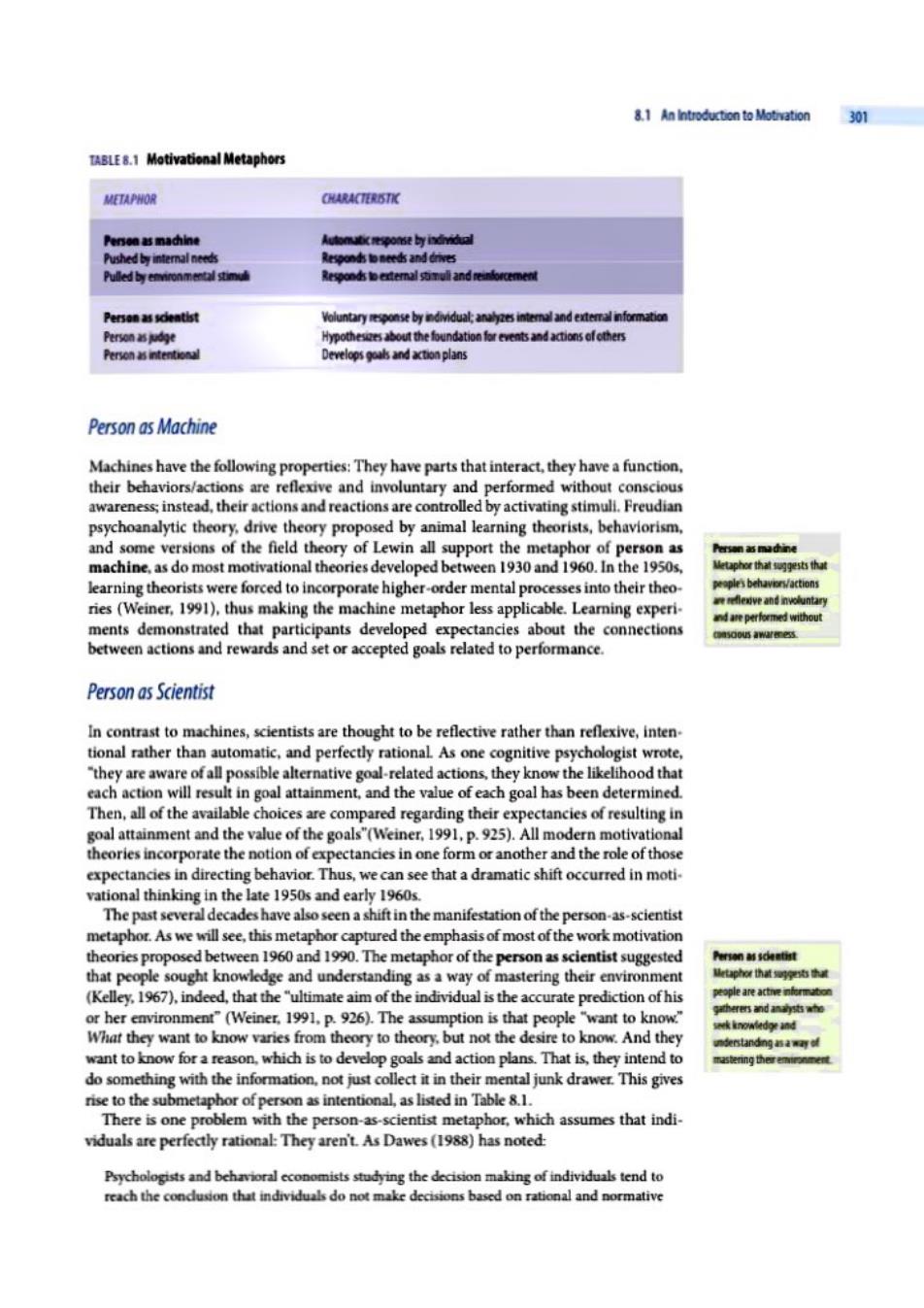正在加载图片...

8.1 An Iintroduction to Motivation 301 TABLE 8.1 Motivational Metaphors METAPHOR C4城4ER5T Persen as machine Automaticpos by indnidual Pushed by interal needs Responds to needs and drive西 Pulled by emvironmental stimul Responds to extemal stmul and reindorcement Person as sdenti时 Voluntary nsby individual:anayentemandextemnf PoMs肉e Hypothesesabout the foundationfor eventsand actons ofothers Person as intentional Develops goals and action plans Person as Machine Machines have the following properties:They have parts that interact,they have a function. their behaviors/actions are reflexive and involuntary and performed without conscious awareness;instead,their actions and reactions are controlled by activating stimuli.Freudian psychoanalytic theory.drive theory proposed by animal learning theorists,behaviorism. and some versions of the field theory of Lewin all support the metaphor of person as machine,as do most motivational theories developed between 1930 and 1960.In the 1950s, learning theorists were forced to incorporate higher-order mental processes into their theo- eaples behavioes/actions ries(Weiner,1991),thus making the machine metaphor less applicable.Leaming experi- are eflexve and involuntary n同e perfoeme时without ments demonstrated that participants developed expectancies about the connections asoous awareness. between actions and rewards and set or accepted goals related to performance. Person as Scientist In contrast to machines,scientists are thought to be reflective rather than reflexive,inten- tional rather than automatic,and perfectly rational As one cognitive psychologist wrote, they are aware ofall possible alternative goal-related actions,they know the likelihood that each action will result in goal attainment,and the value of each goal has been determined. Then,all of the available choices are compared regarding their expectancies of resulting in goal attainment and the value of the goals"(Weiner,1991.p.925).All modern motivational theories incorporate the notion of expectancies in one form or another and the role of those expectancies in directing behavior.Thus,we can see that a dramatic shift occurred in moti- vational thinking in the late 1950s and early 1960s. The past several decades have also seen a shift in the manifestation of the person-as-scientist metaphot.As we will see,this metaphor captured the emphasis of most of the work motivation theories proposed between 1960 and 1990.The metaphor of the person as scientist suggested Person as scientist that people sought knowledge and understanding as a way of mastering their environment (Kelley,1967),indeed,that the"ultimate aim of the individual is the accurate prediction of his hg的ndan由e or her environment"(Weiner,1991,p.926).The assumption is that people "want to know." klnoaded年d What they want to know varies from theory to theory.but not the desire to know.And they want to know for a reason,which is to develop goals and action plans.That is,they intend to do something with the information,not just collect it in their mental junk drawer.This gives rise to the submetaphor of person as intentional,as listed in Table 8.1. There is one problem with the person-as-scientist metaphor,which assumes that indi- viduals are perfectly rational:They aren't.As Dawes(1988)has noted: Psychologists and behavioral economists studying the decision making of individuals tend to reach the condusion that individuals do not make decisions based on rational and normative